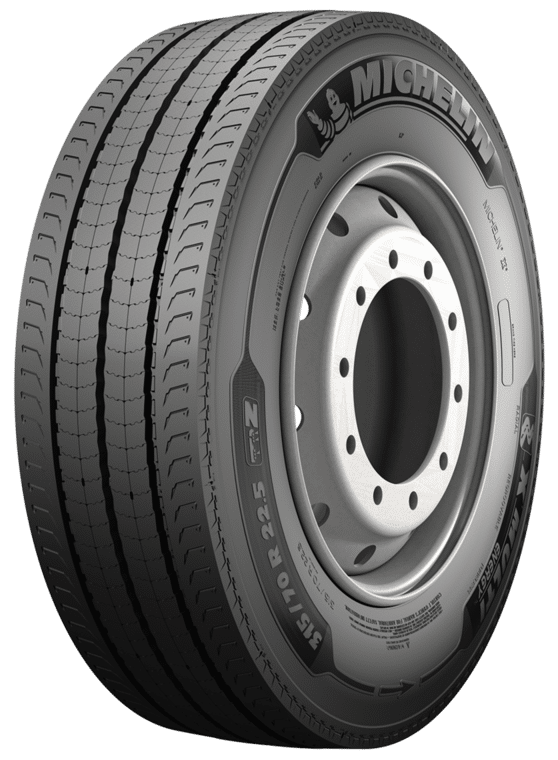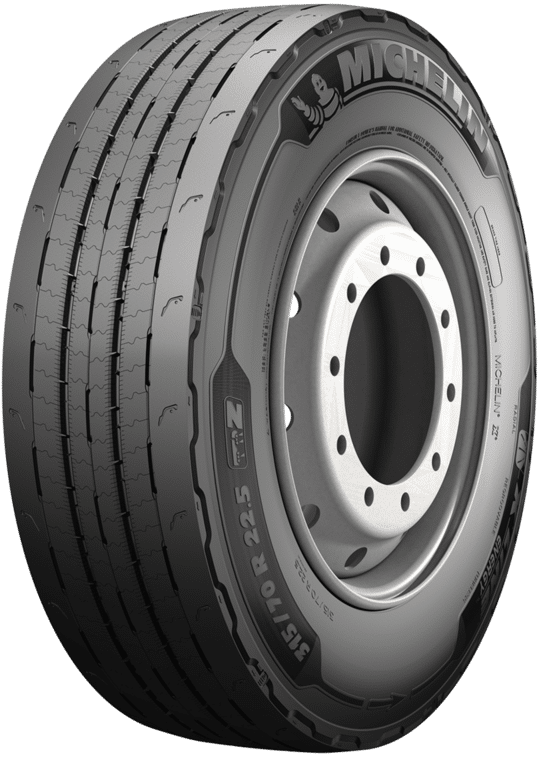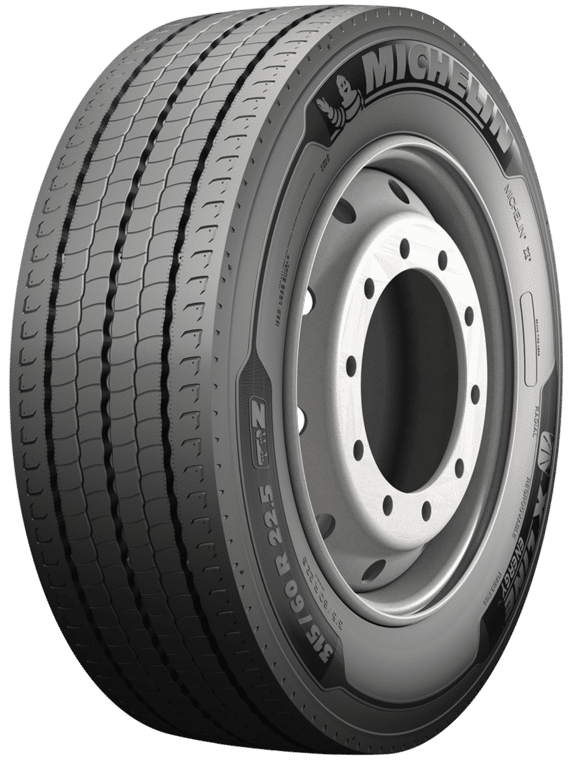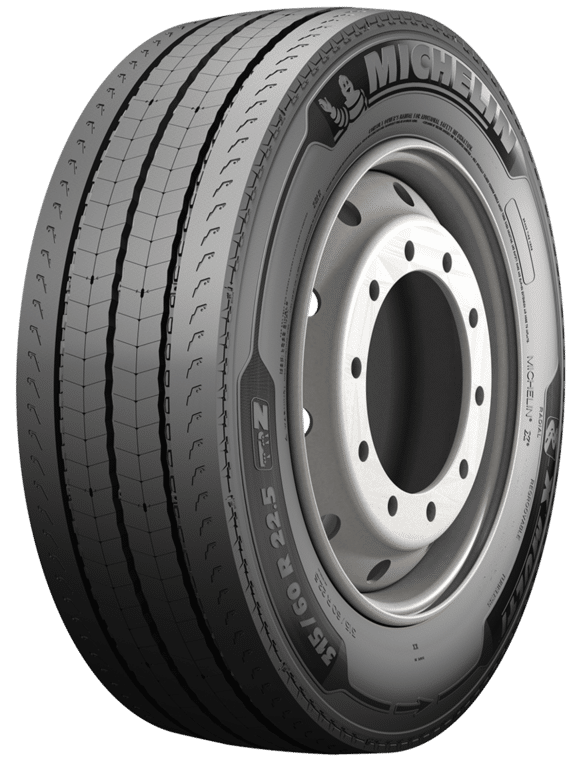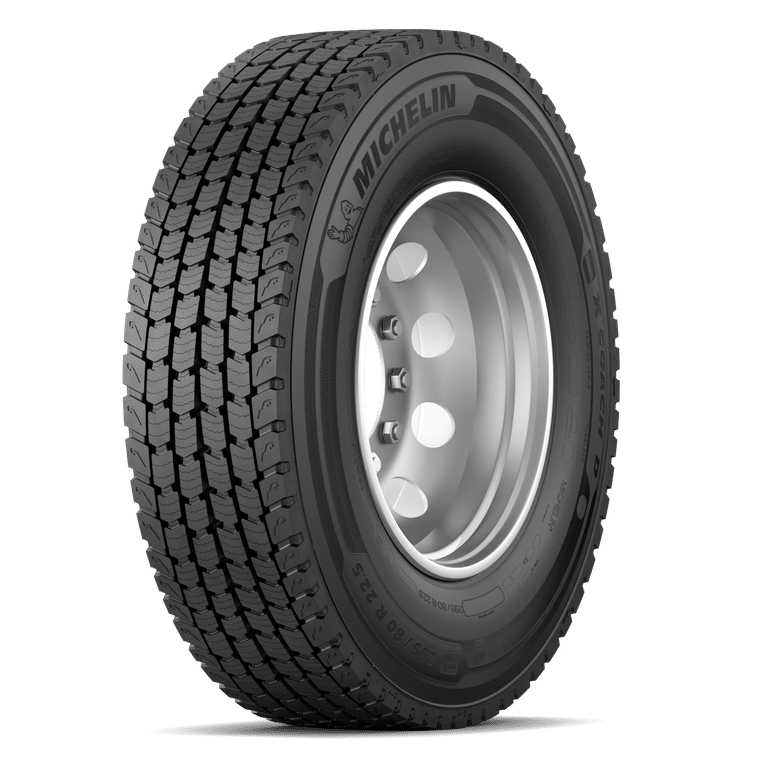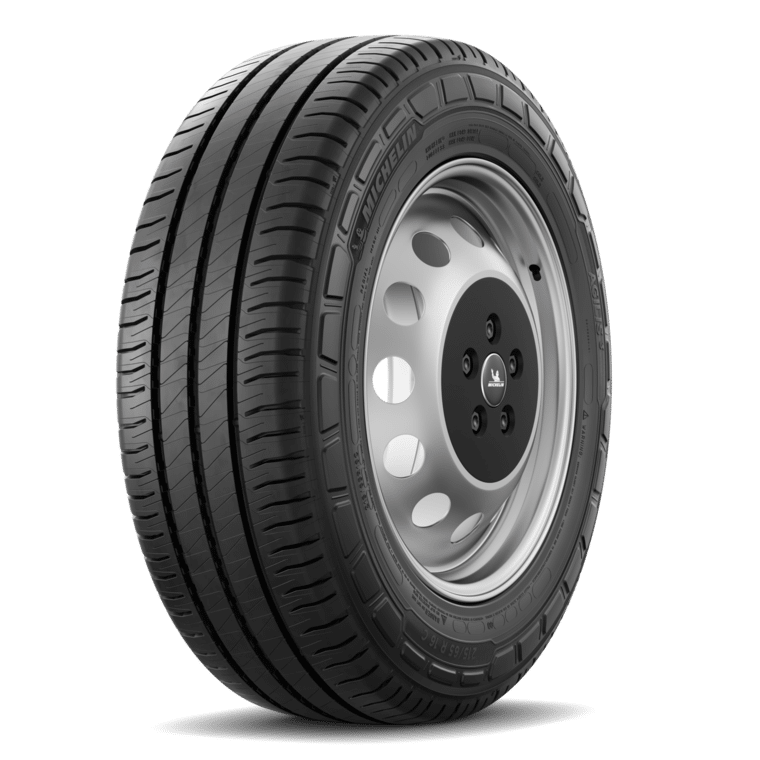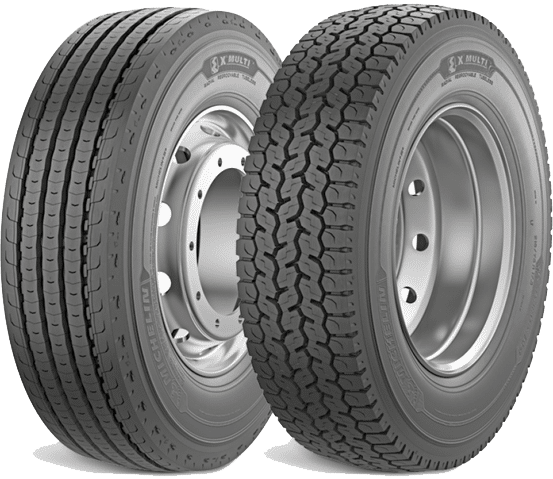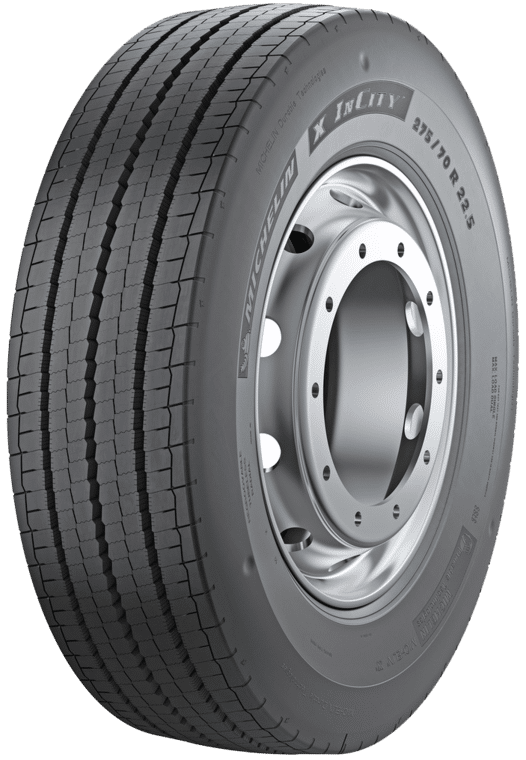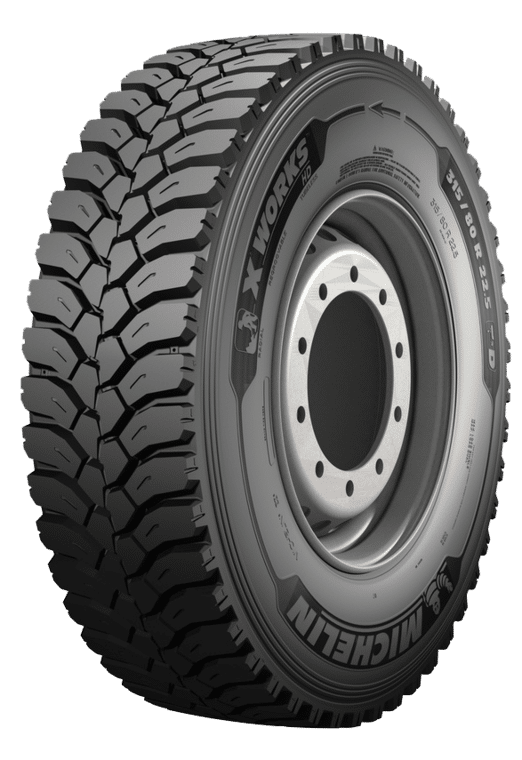
Trucks road
All you need to know about European truck tyre labelling
What you need to know about European truck tyre labelling
Choosing the right tyres for your trucks is not always easy. The unique nature of your business and how you intend to use the tyres must be at the heart of your decision. As well as your choice of ranges and tread patterns that need to be agreed at the time of purchase, other essential performance criterias such as longevity, safety and fuel efficiency must be taken into account to ensure you select those tyres that best suit your needs. Since 2012, the European Commission has provided a tyre rating tool that helps business users to obtain information on the fuel efficiency, noise level and wet grip of tyres.
From 1 May 2021, changes to this rating system will make it more comprehensive and visible to better help you make your choice.
Reading this guide will give you all the information you need about these changes and what this means for you when choosing tyres for your fleet.
An efficiency indicator for truck tyres
The primary objective of the European tyre rating system is to give you transparent information on tyre performance based on three main criterias, measured on new tyres:
Rolling resistance

pictos trans resistance
Braking on wet surfaces

pictos trans pluie
External noise

pictos trans son
The position of a tyre on these three class scales provides you with factual information on its energy, safety and noise performance, allowing you to make informed comparisons at the time of purchase.
A tyre with a good rating on all three scales will help you to reduce fuel consumption and therefore save money (on an item that accounts for 20 to 25% of a transport company’s cost structure), while providing you with a high level of safety and comfort. It is therefore a good compromise between these three parameters.
Understanding the European tyre rating system
What will change from 1 May 2021:
- Regarding the information provided on the label, the first change relates to rolling resistance and braking on wet surfaces. Classes F and G no longer exist and are now included in class E, the lowest performing class.
- The external noise class range will no longer be represented by sound waves but by letters from A to C. The noise value in decibels is still provided.
- As well as this change, an additional indicator now appears if the tyre is suitable for severe snow conditions: the three-peak mountain snowflake (3PMSF) symbol, indicating winter tyres specially designed to guarantee sufficient grip and mobility for winter driving conditions.
- Labelling information will be more accessible to the end consumer at the time of purchase and will be backed up by a new publicly available database providing more technical information.

etiquetage europeen v1
1 and 2 - The “rolling resistance” and “braking on wet surfaces” indicators are displayed on a scale from A to E.
3 - The “external noise” indicator is rated in decibels and assigned one of three classes (A, B or C).
4 - The 3PMSF logo is displayed next to the noise indicator if the tyre qualifies.
5 - A QR code associated with the European EPREL database provides all information relating to labelling and a detailed information sheet that includes additional technical information on the tyre, such as its load index and speed index, and with single or twin wheels where applicable. You will also find this information sheet on all our truck tyre product pages.
6 - Manufacturer’s name and tyre dimensions.
Where can I find a tyre’s European label?
We encourage you to review this information before making your choice.
The European label is available:
- On the product pages for our truck tyres on this site
- In catalogues and other commercial documentation presenting our range of truck tyres
- In our digital order-taking tools (only available to our dealers or our direct end customers)
on e-commerce sites selling our truck tyres online - Lastly, the rating information will also be printed on your purchase invoice (this is the responsibility of your retailers).
Why are these changes happening?
The changes to tyre labelling, which come into effect on 1 May 2021, reinforce the European Commission’s commitment to further improve road safety and reduce CO2 emissions.
Performance differences to be considered
Tyre energy efficiency

resistance roulement picto
Tyres consume between 20 and 30% of energy. Rolling resistance varies from one tyre to another. The choice of tyre can therefore have a significant impact on a vehicle’s fuel consumption. A truck fitted with C-class tyres will consume about 0.6 litres more fuel per 100 km than a truck fitted with B-class tyres. This equates to a saving of about £690 per 100,000 km travelled (1).
It is also worth remembering that fuel savings can also be made by regularly checking tyre pressure and training drivers in energy-efficient driving.
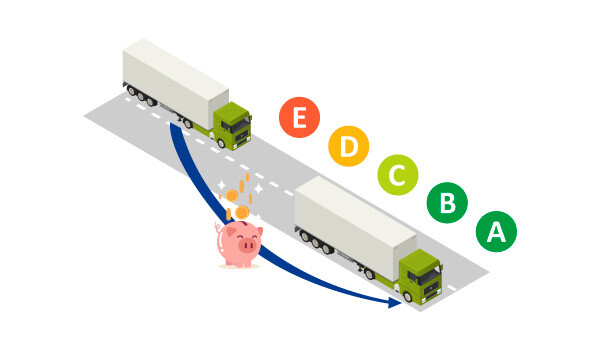
visuel energie
For rolling resistance performance, you may be interested in these tyres:
Braking on wet surfaces

pluie
Between two classes (e.g. between classes B and C), the braking distance for a truck slowing from 60 to 20 km/h is reduced by about 3.5 metres(2).
For maximum safety, remember to keep a sufficient safety distance from the vehicle in front and regularly check your tyre pressures for better grip.
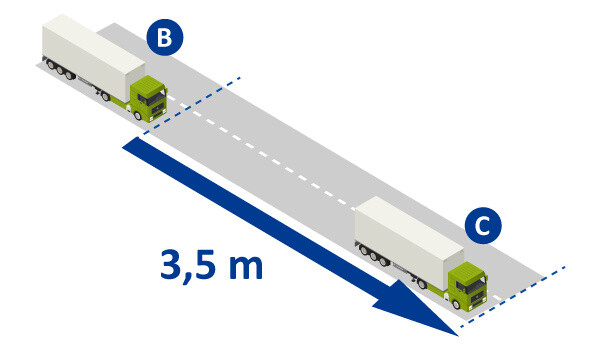
visuel distance v2
For braking performance on wet surfaces, you may be interested in these tyres:
Tyres have an impact on noise pollution

bruit picto
The noise pollution caused by road traffic cannot be underestimated. And tyres contribute to noise pollution. Rolling noise depends as much on the type of tyres as on the road surface. The rating from one sound wave to another represents 3 dB, i.e. a 50% reduction in external noise(2).

bruit image
For external noise performance, you may be interested in these tyres:
An expert’s opinion: To make the best choice, first define your needs clearly
“A useful tool to guide your choice based on your usage needs, but it doesn’t do everything.”
The European tyre performance rating system is a transparent comparative tool to help you choose the tyre that best suits your usage needs.
However, be aware that not all the criteria included on the label have the same importance for everyone, so you should first define your priorities so you can make the best choice. For example, for exclusively urban use, a good rating on the rolling noise and wet grip scales might be your priority. By contrast, if you need tyres for long-distance transport, a good rating on the rolling resistance scale to ensure that fuel consumption is managed as effectively as possible may be essential. Lastly, this rating system is not exhaustive, and it does not take into account other equally important criteria, such as the tyre’s mileage longevity, its continued performance as it wears, its ability to be regrooved or retreaded, or even its diagonal grip.
We therefore encourage you to get in touch with your tyre specialist to help you clearly define your purchasing criteria based on the nature and needs of your business.

photo ana gonzalez 2
Ana Gonzalez
European Product Marketing Manager for the Long Distance Transport Business Line
For more information on tyre labelling visit the European Commission’s website.
(1) Michelin in-house simulation carried out in January 2021 using the European Commission’s fuel savings calculator for 40% urban and 60% motorway use. Fuel price (diesel) estimated at £1.12/litre. Estimated savings per 100,000 km travelled with tyres.
(2) In-house study carried out in November 2020 in Clermont-Ferrand (France) on Michelin’s test track in Ladoux on braking from 60 to 20 km/h carried out using a 4x2 rigid truck fitted all round with 315/80R22.5 MICHELIN X® MULTITM Z B-class tyres vs. SRTT C-class test tyres, modelled on the UNECE Regulation R117 measurement protocol, updated on 23 November 2011.
(3) In-house estimate carried out by Michelin in 2016, comparing the difference in rolling noise between a truck fitted will B-class tyres and a truck fitted with C-class tyres.
